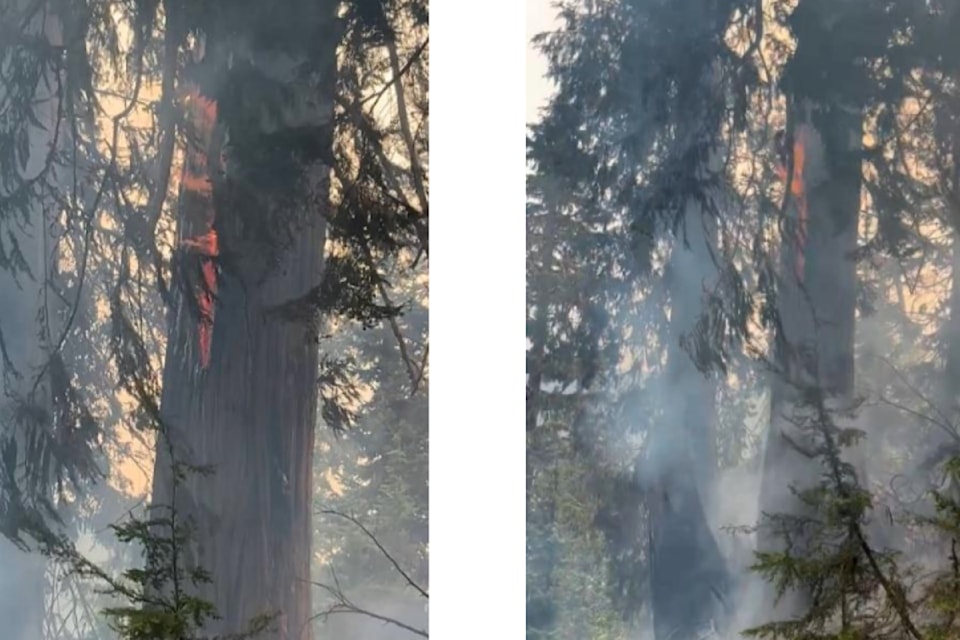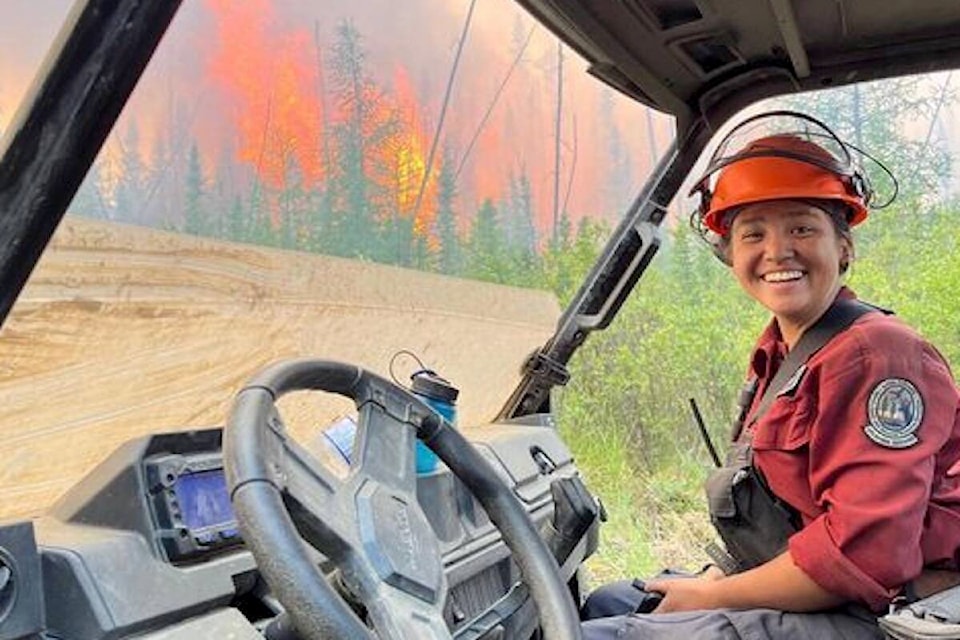Several health and safety violations occurred in the lead-up to the death of a BC Wildfire Service firefighter near Revelstoke in July of 2023, a WorkSafeBC report has concluded.
Devyn Gale, 19, was killed after being hit by a falling "dangerous" tree while working on a wildfire 13 kilometres northwest of Revelstoke on July 13, 2023. She was a third-year wildland firefighter.
READ MORE:
WorkSafeBC shared its 21-page redacted report with Black Press Media Wednesday (Aug. 14). The report is dated July 2, 2024. Two other willdland firefighters were injured attempting to free Gale, but their names were redacted.
The report lists multiple contributing factors in her death, including incomplete dangerous tree assessment, ineffective hazard management, safe work procedures not being followed, inadequate supervision, and inadequate young or new worker orientation and training.

The initial attack crew
On July 12, 2023, a BC Wildfire Service assessment from a helicopter determined an initial attack crew, with a faller, was required. Three firefighters were initially flown in, with another three arriving shortly after. They were dropped off 500 to 600 metres west of the fire, which was on the other side of a very steep gully covered with dense foliage. One firefighter made it to the other side where he observed three standing cedar trees that were burning.
The supervisor determined additional saw work would be required to clear an access trail and the team was later transported back to the base in Revelstoke.
The following day, July 13, the six firefighters were flown back out to the site, and another three were flown out later. The team identified a spot closer to the fire line, about 100 metres uphill. It began working on the new site, aiming to clear the area of fuels and fall any dangerous nearby trees.
Gale and two other firefighters were flown into the new spot, and the faller continued to work on improving conditions there.
Of the three cedars observed the day before, one had fallen overnight, one had a large "widow-maker" – a dead or broken tree limb hung up at the top – and the third was visibly burning from the inside out and its top had already fallen.
Two of the firefighters brought forward concerns and someone suggested a no-work zone be placed around it. Part of the report is redacted, but it adds that after the concerns were raised, no dangerous tree assessment was performed. Some of the firefighters dismissed the concerns, saying cedars are typically very strong and can stand for a long time.
The team decided to remain alert and stay away from the cedars if they felt uncomfortable.
About 30 minutes later a firefighter noticed an increase in fire behaviour.
The incident
WorkSafeBC's report says the incident leading to Gale's death wasn't witnessed, but an investigation determined what occurred.
Shortly after the lunch briefing, Gale was bucking a downed tree using a chainsaw. When she was six to nine metres from the base of the burning cedar, it fell.
Another firefighter heard a cracking noise from Gale's direction and the team began radioing in to check each other's status. There was no response from Gale. The firefighter who heard the cracking noise didn't get a response from Gale and began working his way over to where he last saw her working.
He found Gale and first-aid efforts were "immediately initiated" and a medevac called.

WorkSafeBC's findings
WorkSafeBC says there is "no evidence" a danger tree assessment has been conducted. Dangerous trees are an inherent risk to workers in any forestry operation. They must be identified and the risks must be controlled.
In B.C., there is a training program that outlines a five-step process for assessing and managing dangerous trees safely and effectively. Steps include removing the whole tree or a dangerous part, or establishing flagged no-work zones.
WorkSafeBC says investigators reviewed 16 dangerous tree assessments from earlier fires within the Columbia Fire Centre, but there was minimal information regarding their management.
While the section of the report is partially redacted, it states that on the day of the fatal incident, "no no-work zone was marked in the area" and a team member did not conduct a dangerous tree assessment of the burning cedar, allowing firefighters to "work in close proximity to the hazards of the widow-maker."
The only hazard-mitigating instruction was to keep a heads-up approach.
The report adds that even though the burning cedar hazards were reported, "no actions were taken to eliminate or mitigate risks," which contravenes regulatory requirements and procedures.
Some of nine-member initial attack crew were also young or new wildfire firefighters. WorkSafeBC said there is no evidence showing that any received young and new worker health and safety orientation.
"This may be because (BC Wildfire Service) did not document such training, did not keep the documentation of the training, or did not provide the required orientation and training."
WorkSafeBC also identified six violations in the Occupational Health and Safety Act that included failing to provide its workers with adequate information, instruction, training, and supervision to ensure its workers’ safety.
Response from government, BC Wildfire Service
In an emailed statement, BC Wildfire Service's assistant deputy minister Rob Schweitzer said "immediate and specific actions" have been taken to enhance safety and training within the BC Wildfire Service. That includes "customized" danger tree awareness training.
"We also recognize that there are changes that require long-term solutions. We have adopted changes that include converting crew supervisors into year-round positions, enhancing hiring and recruitment, and supporting research partnerships to improve physical and mental health and safety."
Schweitzer added there is still a "profound impact" on the organization since Gale's death.
READ MORE:
"The nature of wildland firefighting is filled with inherent risk, and I am committed to building a culture of safety within the BC Wildfire Service to reduce risk where possible and keep our members safe."
Premier David Eby said it was "very apparent, given Devyn's death, that something had gone tragically wrong on the site."
"There's no question that people who sign up for the wildfire service are signing up for an inherently risky and difficult job, but it should never be risky or dangerous because of the lack of training, because the concern that somebody raised about safety wasn't acknowledged in the way that it should have been."
Eby added he made a commitment to Gale's family that her death wouldn't be in vain, "that we would learn from it and we would ensure that people are safe on the job."
Forests Minister Bruce Ralston, whose ministry is responsible for the BC Wildfire Service, said the ministry is taking action on all the findings in the report.
“Over the past year we have been working to improve how we fight wildfire in B.C. – starting with supporting the people who work tirelessly on the front lines and taking action to help keep them safe.
"Fighting wildfires day-after-day takes a toll, both physically and mentally, which is why we are increasing personal protective gear, strengthening training opportunities, improving recruitment, and enhancing access to physical and mental health supports."



